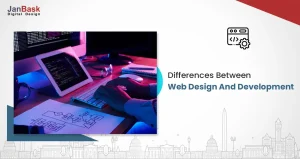
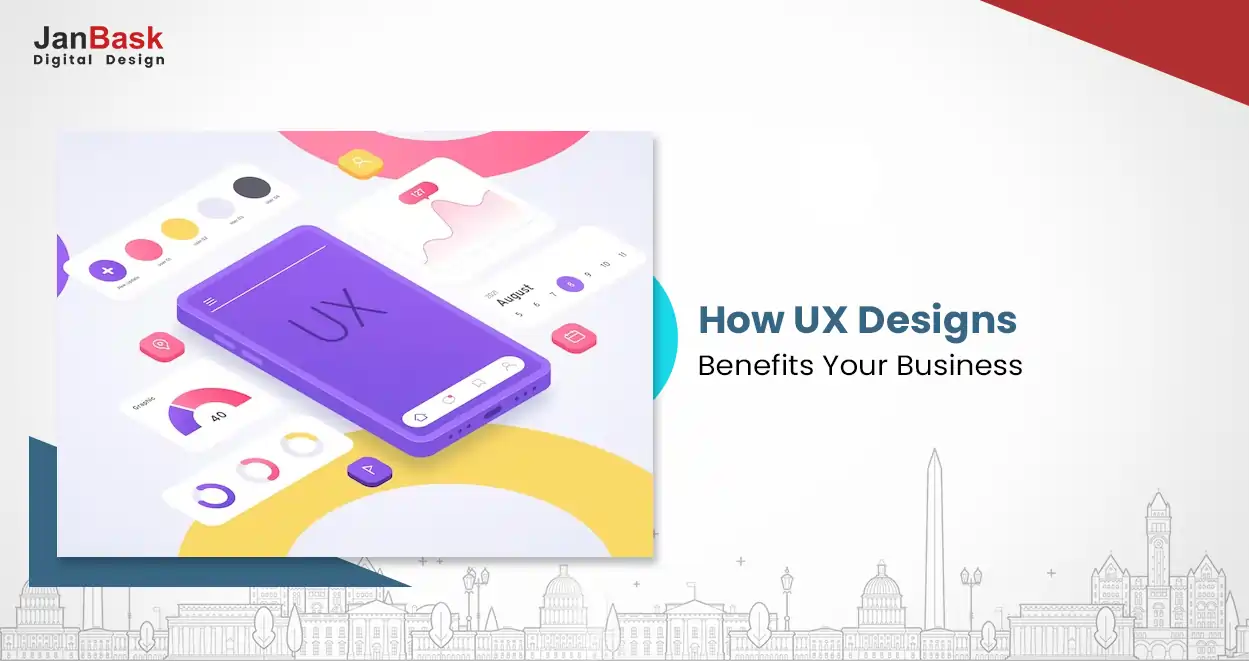
User experience design is the art and science of crafting digital products that are not only functional but also enjoyable to use. In today's world, where people are bombarded with countless choices, businesses that prioritize user experience design ideas are more likely to stand out from the crowd and win the hearts of their customers.
In fact, according to a study by Forrester Research, investing in user experience design can result in a return on investment (ROI) of up to 9,900%. That's not a typo - for every dollar spent on user experience design, a business can potentially earn almost $100 in return.
But what exactly is user experience design, and how can it benefit businesses? In this guide, we'll explore all about it, including its key principles, and explain how they can be applied to drive user engagement, satisfaction, and loyalty and how a web design company can help in the process.

Looking for Best Website Design Services?
User experience design is the process of designing digital products, such as websites, mobile applications, and software, with a focus on creating a positive and enjoyable experience for users. It involves understanding the needs, goals, awareness of top ux web design trends in the market, and preferences of the target audience and designing products that meet those needs in a user-friendly and intuitive way.
Let's consider an example of a mobile banking app. A good user experience design idea for a mobile banking app would ensure that the app is easy to navigate and use, with clear labeling and instructions. The app would also have a clean and uncluttered design, with a simple color scheme and font that is easy to read. The login process would be secure but streamlined, and the app would provide users with quick access to account balances, transaction histories, and other relevant information
Another example is a restaurant website. A well-designed restaurant website would feature clear and visually appealing images of the menu items, along with descriptions and prices. The website would also be easy to navigate, with clear categories for appetizers, entrees, and desserts, and a search bar for specific items. The website would also provide users with important information such as hours of operation, location, and contact information and would be optimized for mobile devices so that users can easily access the information they need on the go.
In both of these examples, the user experience design plays a critical role in creating a positive experience for the user. By making the app or website easy to use, visually appealing, and intuitive, businesses can improve user engagement and satisfaction, leading to increased customer loyalty and revenue.
Moving ahead with user design principles, also known as UX design principles, are a set of guidelines and best practices that are used to create digital products that are both functional and enjoyable to use. These principles are based on a deep understanding of the needs, goals, and preferences of the target audience and aim to create products that meet those needs in a user-friendly and intuitive way.
There are many different user design principles, but some of the most important ones include:
The first and most important principle of UX design is to put the user at the center of the design process. This means understanding their needs, goals, and preferences, and designing solutions that meet those needs in a delightful and intuitive way. By prioritizing user needs over business objectives, companies can create products that not only work well, but also resonate with their target audience.
User-centric UX design ensures that the entire experience of a product or service is aligned with the unique needs and preferences of individual users. A quintessential example of user-centric UX design can be observed in Spotify, a popular music streaming service. Spotify offers personalized music recommendations backed by algorithms considering listening habits, interests, and social interactions. 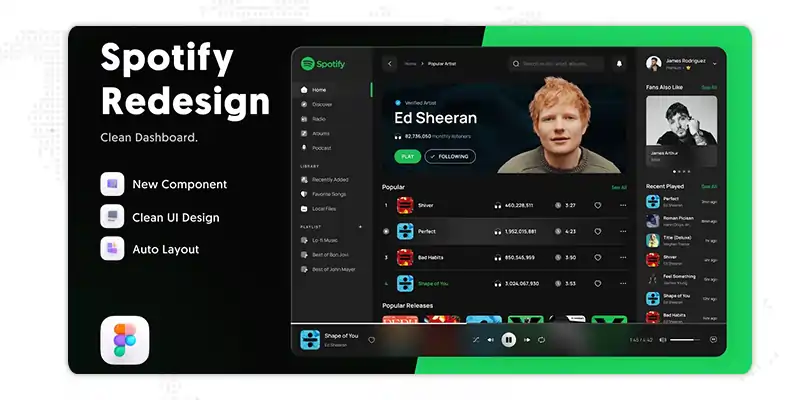
Furthermore, the app offers custom playlists and daily mixes, encouraging users to explore new songs and artists based on their taste. As a result, Spotify's UX design efficiently caters to the comfort and enjoyment of its users, where every interaction is tailored to each individual, ensuring a seamless and engaging experience.
The beauty of simple UX design truly shines when it comes to creating friendly user experiences. Just imagine a sleek and efficient navigation menu that takes center stage on a minimalistic homepage, guiding users effortlessly to their desired location. By focusing on intuitive layouts, spacious design elements, and meaningful interactions, a user can sail smoothly through the digital space, feel empowered to explore, and ultimately find what they need in mere moments.
This frictionless journey not only saves the user precious time and mental energy, but also nurtures a deep sense of satisfaction and trust in the product or service. In this age of constant connectivity, a well-executed example of simple UX design is a breath of fresh air that will keep users coming back for more.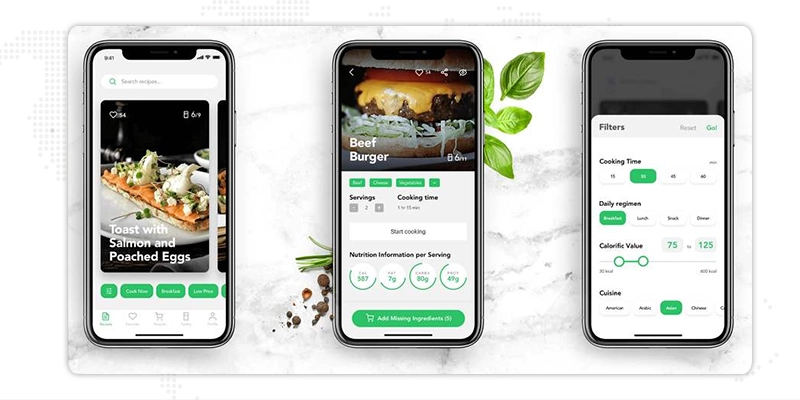
Perfect Recipe: This case study shows the entire UX design process is very simple. Many aspects like product personalization, animated interactions, and other interface details have been included which is easy and simple to use.
In today's diverse world, it's important to design products that are accessible and inclusive for all users, regardless of their abilities or backgrounds. This includes designing for users with disabilities, as well as for users who speak different languages, come from different cultures, or have different levels of technical expertise. By making products that are easy to use and understand for everyone, businesses can expand their customer base and promote a more inclusive society.
Finally, UX design should aim to create an emotional connection between the user and the product. By using elements such as color, imagery, and micro-interactions, designers can evoke positive emotions such as joy, trust, and excitement, which can help build long-term loyalty and advocacy. Emotional design is particularly important for businesses that rely on repeat customers, such as subscription services or e-commerce stores.
Emotional UX design plays a crucial role in creating impactful user experiences that evoke pleasant feelings and foster lasting connections with a brand. A perfect example of emotional UX design is the animation used by Slack, the popular workplace communication platform.
When you launch the app, the Slack logo, consisting of four colored hash elements, comes alive with a delightful burst of animation. Each element swirls and rearranges itself, ultimately reforming the familiar logo. This seemingly simple animation grabs users' attention and stimulates intrigue and excitement. It communicates that Slack is fun, easy to use, and cutting-edge, creating a sense of anticipation and eagerness for what awaits the user within the platform. This powerful and subtle inclusion of emotional UX design showcases how design elements can dramatically impact and strengthen user engagement and brand perception.
In today's competitive digital landscape, user experience design has become an essential game changer for businesses oof any size. Let’s find out how UX design helps businesses and why it's so important for companies to invest in this crucial aspect of their digital strategy.
One of the primary benefits of UX design is that it helps increase customer satisfaction and loyalty. By creating products that are easy to use, efficient, and meet the needs of their users, businesses can improve the overall user experience, leading to higher levels of customer satisfaction and loyalty. A study by Forrester found that companies that invest in UX design can expect to see a 30% increase in customer satisfaction, a 33% increase in customer retention, and a 40% increase in revenue.
Another critical benefit of UX design is that it helps improve user engagement with digital products. By creating intuitive, engaging products that provide a positive user experience, businesses can increase user engagement and drive higher levels of interaction with their products. This can lead to increased brand awareness, higher conversion rates, and increased revenue. In fact, a study by Adobe found that companies that prioritize UX design can expect to see a 4x increase in revenue compared to companies that do not.
UX design also helps to increase efficiency and productivity within businesses. By creating products that are easy to use and intuitive, businesses can streamline their workflows and improve overall efficiency. This can lead to cost savings, increased productivity, and improved employee morale. In fact, a study by McKinsey found that companies that invest in UX design can expect to see a 10% to 50% increase in employee productivity.
Finally, UX design can provide businesses with a competitive advantage in their respective markets. By creating products that are not only functional but also provide a superior user experience, businesses can differentiate themselves from their competitors and attract more customers. In fact, a study by Design Management Institute found that companies that prioritize design outperform their peers by a significant margin, with a 219% return on investment compared to the S&P 500 index.
Now that we have explored so much about user experience design, it is time to learn about some famous brands and companies that have leveraged the power of user experience design extensively to become what they are today.
Airbnb has undoubtedly revolutionized the way we travel and experience accommodations, and their exemplary UX design is a significant contributor to their success. The seamless navigation and intuitive interface make it extremely easy for users to search for and book their dream vacation rentals effortlessly. The thoughtful use of visuals, such as high-quality images and videos, further enhances the user's experience and evoke an emotional connection with the spaces they explore.
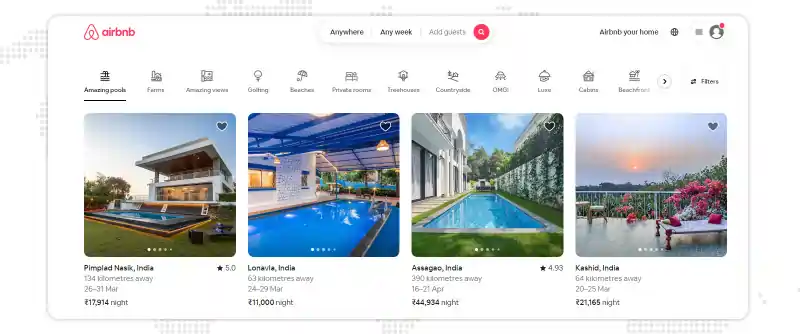
Additionally, the integration of features like personalized recommendations, detailed reviews, and user-friendly filters streamline the process of finding an ideal stay tailored to individual preferences. Airbnb's UX design has meticulously shaped the way travelers plan and enjoy their journeys by prioritizing overall user satisfaction, ensuring an engaging experience that keeps them coming back for more.
Slack is a messaging platform that has become increasingly popular in recent years, in part due to its excellent user experience design. The platform's user interface is designed to be intuitive and easy to navigate, with clear and simple messaging tools. Slack has also invested in creating a range of integrations with other digital products, allowing users to seamlessly integrate Slack into their workflows and increase productivity.
Jasper, a remarkable startup, has garnered significant acclaim for its exceptional UX design. This pioneering company expertly implements intuitive, user-friendly interfaces that elevate the user experience, allowing even first-time site visitors to navigate with ease.
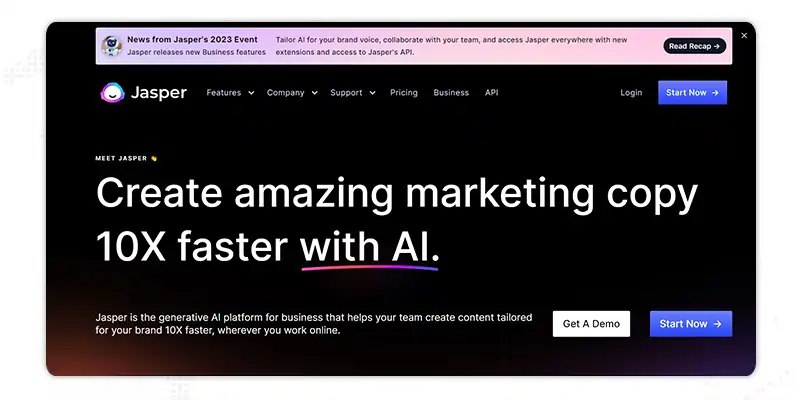
Through vibrant and interactive visuals and seamless transitions, Jasper expertly guides users through its diverse offerings, ensuring top-level functionality at every touchpoint. By placing the customer experience at the forefront of every decision, Jasper continues to make waves in the business world while setting the gold standard in UX design.
Dropbox is a cloud storage service that has become a household name in recent years. The company's website and mobile app are designed to be easy to use and provide a seamless user experience.
One example of this is the company's file sharing and collaboration tools, which allow users to easily share files and collaborate on projects with others. Dropbox has also invested in creating a simple and recognizable brand identity, with a clean and minimalistic design.
The UX design process is a systematic approach to designing digital products that prioritize the needs and goals of the user. The process typically involves several stages, each of which is focused on a different aspect of the design process. While the specifics of the process can vary depending on the product being designed and the team working on it, some common stages are often included in the UX design process.
Here is a brief overview of each stage:
The first stage of the UX design process is typically research, which involves gathering information about the target audience, the competition, and the market. This stage may involve conducting user interviews, surveys, and usability tests, as well as analyzing data about user behavior and preferences.
Once the research is complete, designers move on to the analysis stage, where they use the data they've gathered to identify key insights and design opportunities. This stage may involve creating personas, user flows, and other design documents that help guide the rest of the process.
The ideation stage involves generating ideas and concepts for the product based on the insights and opportunities identified in the analysis stage. This may involve brainstorming sessions, sketching, and other ideation techniques.
The design stage involves creating wireframes, prototypes, and other design artifacts that bring the ideas and concepts to life. This stage may involve several iterations as designers refine their designs based on user feedback and testing.
Once a design is complete, it's important to test it with real users to ensure that it's effective and easy to use. This stage may involve conducting usability tests, A/B testing, and other types of testing to gather feedback and refine the design.
Finally, once a design has been refined and tested, it's time to launch the product. This may involve deploying it to the app store or website, promoting it through marketing channels, and monitoring its performance and user feedback.
In today's fast-paced digital landscape, users have a shorter attention span than ever before, akin to that of a fruit fly. Consequently, a poorly designed digital product can quickly turn off your audience, causing them to seek out other options. To keep your audience engaged and loyal, a well-crafted UX design can be a game changer. Consider partnering with an experienced website design company to elevate your business to new heights of success.
Interested in our Web Design & Development Services?

1. What is UX design, and how can it benefit my business?
UX design focuses on creating products that provide a positive user experience by prioritizing usability, accessibility, and desirability. By investing in UX design, businesses can improve customer satisfaction, increase engagement, and drive success.
2. What are the key principles of UX design?
The key principles of UX design include usability, accessibility, desirability, and user-centricity. These principles prioritize the needs of the user and aim to create digital products that are functional, easy to use, and visually appealing.
3. How does UX design differ from other types of design?
UX design focuses specifically on creating products that provide a positive user experience, while other types of design may prioritize other aspects, such as visual aesthetics or branding. UX design aims to create products that are not only visually appealing but also functional and easy to use.
4. What are the benefits of investing in UX design for my business?
By investing in UX design, businesses can improve customer satisfaction, increase engagement and retention, reduce costs associated with poor design, and differentiate themselves from competitors.
5. How do I find the right UX design services for my business?
Look for a UX design company that has experience working with businesses in your industry and has a track record of creating successful products. Consider the company's portfolio, client testimonials, and their approach to UX design.
6. How much does UX design cost?
The cost of UX design services can vary depending on the complexity of the project and the level of experience of the design company. It's important to discuss your budget and project requirements upfront to ensure that the design company can provide a cost-effective solution that meets your needs.
7. What should I expect from the UX design process?
The UX design process typically involves research, prototyping, testing, and implementation. Throughout the process, the design company should prioritize the needs of the user and provide regular updates on progress and feedback. The goal is to create a product that provides a positive user experience and meets the business's objectives.
Leave a Reply